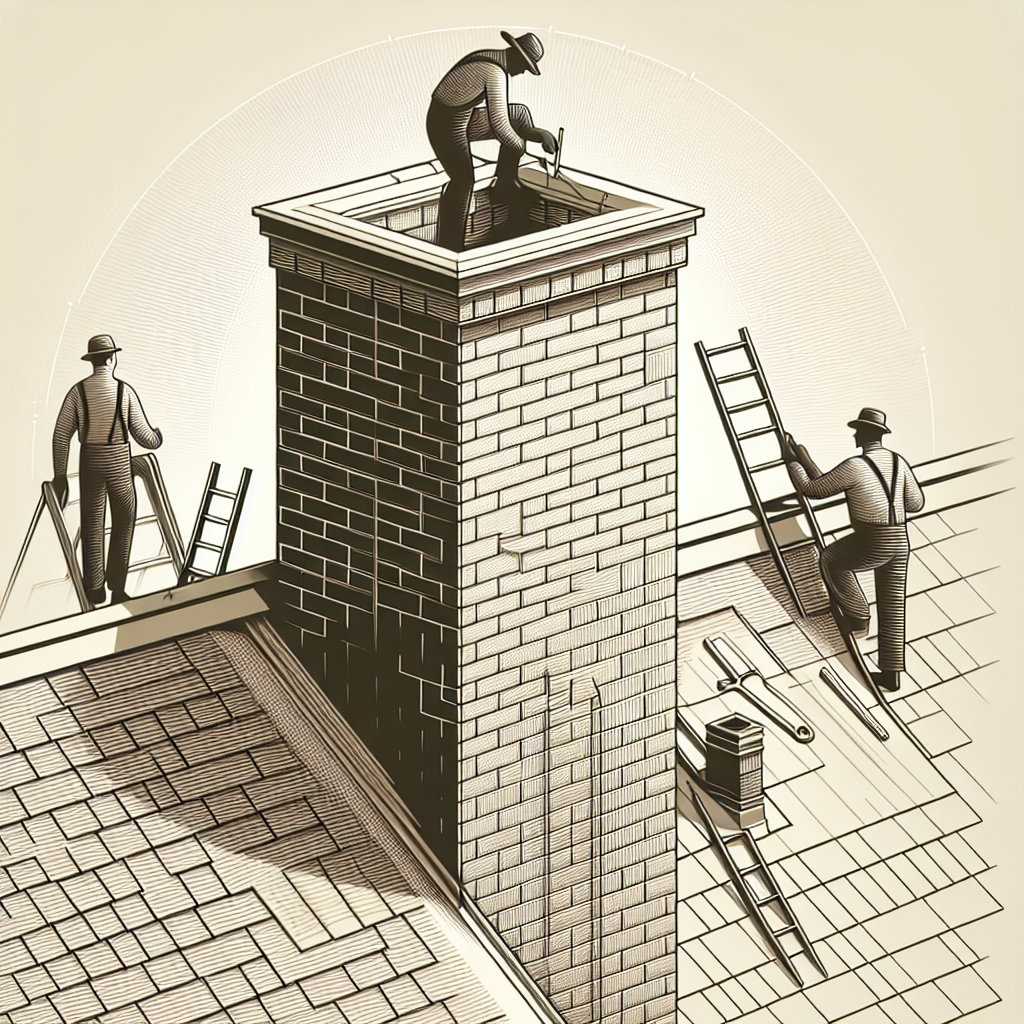
Chimneys are often an overlooked aspect of a home’s structure. While many homeowners focus on the roof, windows, and doors, the chimney plays a significant role in maintaining the integrity of your house. One of the most critical components of a chimney is the flashing. Chimney flashing repairs are essential, and understanding why they matter is crucial for every homeowner.
Understanding Chimney Flashing
Chimney flashing is the material that seals the intersection where your chimney meets the roof. This area is prone to leaks due to the unique angle at which the chimney sits. Flashing is typically made of metal, such as aluminum or copper, and is designed to divert water away from the chimney. If it becomes damaged or compromised, it can lead to significant issues.
The Importance of Proper Flashing
When chimney flashing is installed correctly, it acts as a barrier against moisture. Water can seep into your home through the smallest cracks. If your chimney flashing is damaged, water can enter your attic or walls, causing mold, rot, and other serious issues. Ignoring chimney flashing repairs can lead to costly damage that extends far beyond the chimney itself.
Signs You Need Chimney Flashing Repairs
It’s essential to be vigilant about the signs that indicate you may need chimney flashing repairs. One of the first indicators is water stains on your ceiling or walls near the chimney. This is a clear sign that water is leaking through, and it’s time to take action.
Another sign is rust or corrosion on the flashing itself. If you notice any bubbling paint or deterioration around the flashing, it’s time to call a professional. Additionally, if you see cracks in the masonry of the chimney, this can also signal that the flashing is not doing its job effectively.
Common Causes of Flashing Damage
Several factors can lead to flashing damage. Severe weather is perhaps the most common culprit. Heavy rains, snow, and high winds can all take a toll on your chimney flashing. Over time, the elements can cause the flashing to loosen or corrode.
Another cause of flashing damage can be poor installation. If the flashing was not installed correctly in the first place, it may not provide the protection you need. It’s crucial to hire experienced professionals, such as the Julington Creek roofers, who understand the importance of proper installation and maintenance.
Why You Should Prioritize Chimney Flashing Repairs
Neglecting chimney flashing repairs can lead to a multitude of problems. Water damage is not just an aesthetic issue; it can compromise the structural integrity of your home. Mold growth can also pose serious health risks to you and your family.
Moreover, the longer you wait to address flashing issues, the more expensive the repairs will become. What could have been a simple repair may escalate into a full roof replacement or extensive interior repairs. By prioritizing chimney flashing repairs in Julington Creek, you are protecting your investment and ensuring your home remains safe and comfortable.
Cost Implications of Ignoring Repairs
Understanding the financial implications of ignoring chimney flashing repairs can motivate any homeowner. The initial cost of repairing flashing is often small compared to the potential expenses incurred from water damage. Home repairs can quickly add up, especially if they involve structural damage or mold remediation.
Investing in chimney flashing repairs now can save you considerable money in the long run. It’s always better to tackle small issues before they become major problems.
Choosing the Right Professionals for Repairs
When it comes to chimney flashing repairs, selecting the right professionals is essential. Look for contractors who specialize in roofing and chimney work. The Julington Creek roofers are known for their expertise in the area and can provide you with the precise repairs you need.
Research their reputation by checking reviews and asking for references. A reliable contractor will have a proven track record of successful repairs and satisfied customers. Proper installation and repairs require skill, so it’s crucial to choose wisely.
What to Expect During the Repair Process
Once you’ve selected a contractor, it’s helpful to understand what to expect during the repair process. The first step will typically involve an inspection of the chimney and surrounding areas. This will help identify the extent of the damage and the necessary repairs.
Once the assessment is complete, the professionals will provide you with a detailed estimate. After you approve the work, they will proceed with repairing or replacing the flashing as needed. The repair process may take a few hours to a day, depending on the complexity of the work required.
Maintenance Tips for Your Chimney Flashing
After your chimney flashing repairs are complete, it’s vital to maintain it to prevent future issues. Regular inspections should be part of your home maintenance routine. Look for any signs of wear and tear, especially after severe weather events.
Cleaning the gutters and ensuring proper drainage around your home can also help. Water accumulation can lead to increased pressure on the flashing and lead to damage over time.
The Role of Seasonal Inspections
Seasonal inspections are an excellent way to catch potential issues early. As the seasons change, different weather patterns can impact your chimney flashing. In the fall, be sure to check for any debris that may have accumulated. In the spring, inspect for any damage caused by winter weather.
By being proactive, you can extend the lifespan of your chimney flashing and avoid costly repairs.
Conclusion
Chimney flashing repairs are a critical aspect of home maintenance that should never be overlooked. Understanding the importance of this component can save you time, money, and stress in the long run. By prioritizing these repairs and working with experienced professionals like the Julington Creek roofers, you can ensure your home remains safe and dry. Don’t wait for the signs of damage to appear; take action today and protect your home from the elements.
